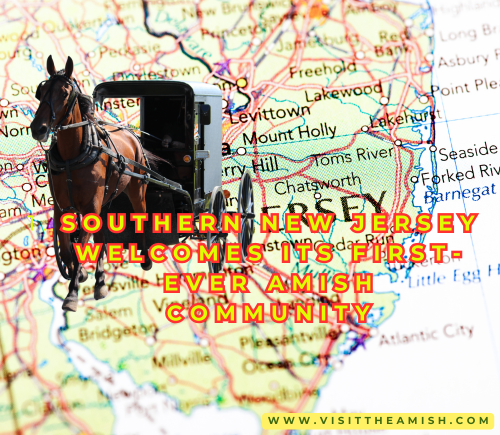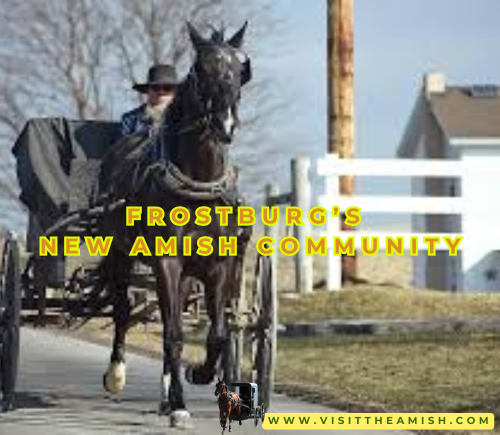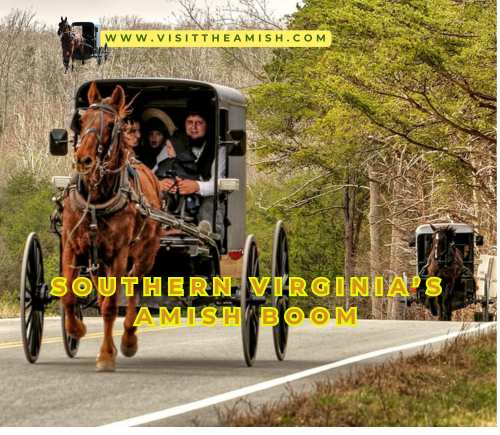A New Amish Community Emerges in Southern New Jersey
Southern New Jersey is buzzing with excitement as a new Amish community begins to take root in the region. Known for their simple lifestyle, strong faith, and exceptional craftsmanship, the Amish have long been admired for their ability to balance tradition with modernity. While Amish markets and vendors have been a familiar sight in the Garden State for years, this marks the first time an Amish settlement is being established in New Jersey. Locals and group members alike are embracing this development, which promises to bring cultural enrichment and economic opportunities to the area.
Building Roots in Southern New Jersey
The new Amish community is located near Mullica Hill, a charming town known for its historical significance and thriving farmers’ markets. The decision to settle here was driven by several factors, including proximity to existing Amish markets and a welcoming environment. The group primarily consists of families relocating from Lancaster County, Pennsylvania, seeking new opportunities while maintaining their traditional way of life.
Jacob Stoltzfus, one of the community leaders, explained the move: “We were drawn to Mullica Hill because of its rural landscape and the kindness of its people. It feels like a place where our families can thrive while staying true to our values.”
Local residents have expressed enthusiasm about their new neighbors. Mary Jenkins, a longtime Mullica Hill resident, shared her thoughts: “It’s wonderful to see them settling here. Their presence adds so much character to our town. I’m looking forward to buying fresh produce and handmade goods directly from them.”

Economic Impact: Local Businesses Thrive
The arrival of the Amish community has already begun to benefit local businesses. Many Amish families are collaborating with existing markets in Southern New Jersey, such as the Mullica Hill Amish Farmers Market and the Columbus Farmers Market. These partnerships are bringing fresh products, handmade crafts, and home-style foods to eager shoppers.
Among the standout offerings are baked goods from Beiler’s Bakery, fresh meats from Dutch Family Fresh Meats, and soft pretzels from Dutch Pretzels. The Dutch Kountry Kitchen has also introduced seasonal pies and pastries crafted using traditional Amish recipes. These businesses are seeing increased foot traffic as curious locals flock to experience authentic Amish products.
Chris King, owner of My Father’s Place restaurant at the Columbus Farmers Market, noted: “The Amish community settling here has been a blessing for us. Their dedication to quality aligns perfectly with what we aim to offer our customers.”
Cultural Exchange: Learning from Each Other
The establishment of an Amish settlement in Southern New Jersey is not just about commerce—it’s also fostering cultural exchange. Locals are learning more about Amish traditions, including their religious practices and sustainable farming methods.
Isaac Fisher, a young member of the new community, shared his perspective: “We hope to share our way of life with our neighbors while learning from them as well. It’s about building mutual respect.”
Residents have been particularly intrigued by the Amish approach to education and craftsmanship. The community plans to open a small schoolhouse where children will learn practical skills alongside traditional subjects.
Challenges Ahead
While the new settlement is off to a promising start, there are challenges ahead. Building codes and regulations in New Jersey differ significantly from those in Pennsylvania, which has caused some initial hurdles for the Amish families constructing homes and barns.
David Yoder, another community leader, explained: “We’re working closely with local officials to ensure we meet all requirements without compromising our beliefs.”
Despite these obstacles, both locals and group members remain optimistic about the future of the settlement.
Looking Forward
As Southern New Jersey welcomes its first-ever Amish settlement, it’s clear that this development will leave a lasting impact on the region. From enriching local culture to boosting economic activity through markets and crafts, the arrival of the Amish is being celebrated as a unique opportunity for growth and connection.
Residents like Mary Jenkins are hopeful: “I think this is just the beginning of something really special for our town.”
For now, visitors can experience a taste of Amish life at local markets while eagerly anticipating what this new chapter will bring.

Citations:
[1] https://nj1015.com/no-amish-in-new-jersey-think-again/
[2] https://981thehawk.com/how-amish-live/
[3] https://www.nj.com/mosaic/food_culture/2025/03/fresh-delicious-meals-worth-the-wait-at-nj-amish-market.html
[4] https://www.jerseysbest.com/community/taste-homemade-goods-from-the-heart-of-amish-country-at-n-j-markets/
[5] https://amishamerica.com/amish-markets-new-jersey/
[6] https://www.columbusfarmersmarket.com/amish-market
[7] https://catcountry1073.com/where-are-all-new-jerseys-amish-people-answer-everywhere/
[8] https://www.reddit.com/r/SouthJersey/comments/12jrw4d/closestbest_amish_market_in_south_jersey/
[9] https://amishmarketmullicahill.com
[10] https://amishamerica.com/no-amish-new-jersey/
[11] https://amishamerica.com/5-amish-businesses-you-should-visit/
[12] https://www.fox43.com/article/news/local/lancaster-county/pennsylvania-tradition-amish-spring-auctions-mud-sale-fire-departments/521-65b93d45-a242-4d5d-b8e5-5031782e5ee7
[13] https://www.youtube.com/watch?v=dhPBIuIQBUk
[14] https://rock1041.com/where-are-all-new-jerseys-amish-people-answer-everywhere/
[15] https://www.fox29.com/video/915771
[16] https://amishexperience.com
[17] https://www.tripadvisor.com/Attraction_Review-g53573-d1524370-Reviews-The_Amish_Village-Ronks_Lancaster_County_Pennsylvania.html
[18] https://visittheamish.com/serenity-in-south-jersey-new-amish-community-settles-in-salem-county/
[19] https://en.wikipedia.org/wiki/List_of_U.S._states_by_Amish_population
[20] https://www.goodreads.com/work/quotes/11645898-amish-proverbs-words-of-wisdom-from-the-simple-life
[21] https://amishamerica.com/states-without-amish/
[22] https://www.bridgetonbeacon.com/blog/bridgeton-area-amish-market/
[23] https://nationalhumanitiescenter.org/tserve/eighteen/ekeyinfo/midcol.htm
[24] https://www.ustoursamerica.com/chasing-the-amish/
[25] https://rarediseases.org/amish-community-testimony/
[26] https://www.youtube.com/watch?v=UDXKmJifdb4
[27] https://www.youtube.com/watch?v=r-GWAFKL6IU
[28] https://pmc.ncbi.nlm.nih.gov/articles/PMC6118071/
[29] https://williamstownfarmersmarket.com
[30] https://www.padutchfarmersmarket.com
[31] https://www.yelp.com/search?find_desc=Amish+Market&find_loc=Pitman%2C+NJ
[32] https://bridgetonamishmarket.com
[33] https://www.yelp.com/search?find_desc=Amish+Market&find_loc=South+Brunswick+Township%2C+NJ
[34] https://www.heflingsamishfarmarket.com
[35] https://www.yelp.com/search?find_desc=Amish+Market&find_loc=Mount+Laurel%2C+NJ
[36] https://www.yelp.com/search?find_desc=Amish+Market&find_loc=Mullica+Hill%2C+NJ
[37] https://amishmarketmullicahill.com/portfolio-item/mullica-hill-amish-restaurant/
[38] https://www.instagram.com/darthefoodguru/reel/DHQyf5FRsm2/
[39] https://www.bristolamishmarket.com
[40] https://www.reddit.com/r/newjersey/comments/16fdh9h/what_are_some_good_amish_markets_in_new_jersey/
[41] https://visitsouthjersey.com/the-ultimate-guide-to-south-jersey-farmers-markets/
[42] https://www.mapministry.org/news/amish-in-the-news/page-3
[43] https://www.nbcphiladelphia.com/decision-2024/republicans-seek-amish-votes-pennsylvania/4011214/
[44] https://www.reddit.com/r/AskAnAmerican/comments/7ae294/people_who_live_near_amish_communities_what_are/
[45] https://www.phillymag.com/2013/01/04/14-quotes-amish-mafia/
[46] https://www.reddit.com/r/AskAnAmerican/comments/la59xv/people_who_live_near_amish_communities_what_are/
[47] https://amishdepot.com















